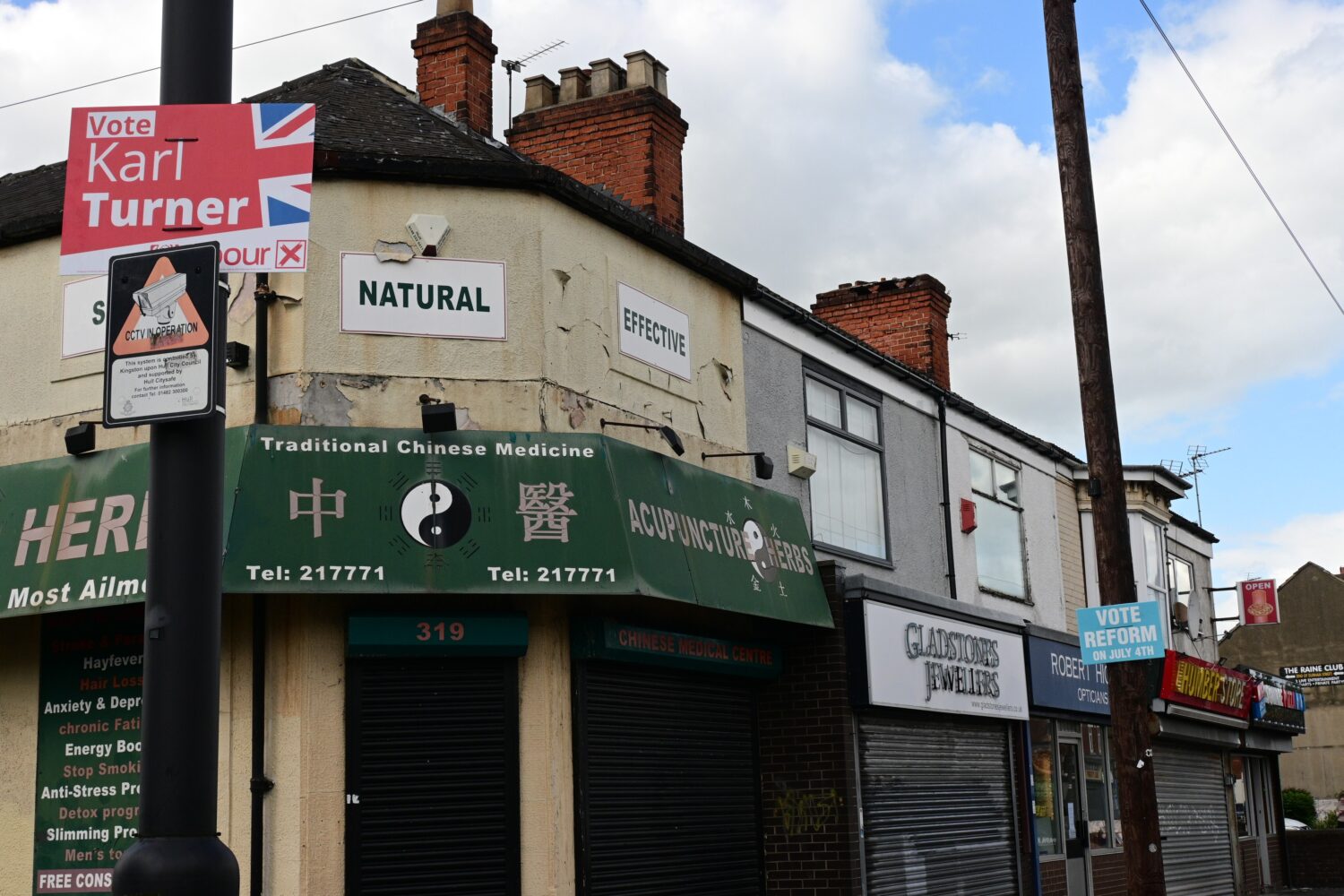Right Noise
The Reform threat can’t be discounted. But Labour should focus on staying ahead of the Tories, writes Christabel Cooper
The populist right are on the march across continental Europe and America, often trampling centre-left parties in the process. Here in the UK, violent far-right rioters recently took to the streets, claiming that their anger was representative of wider public concerns, particularly around immigration – with almost all of the areas experiencing riots returning Labour MPs in the last general election. Against this backdrop, some in Labour are looking nervously at the Reform party. So how much of a threat to Labour does it pose?
On the night of the general election, Nigel Farage declared: “We’re targeting Labour votes. We’re coming for Labour.” There is reason to think this was no idle threat: of the 98 seats where Reform sits in second place, 89 are Labour held. Post-election analysis by the thinktank More in Common shows overlap between Labour and Reform voters: of those who voted Labour, 15 per cent considered voting Reform. If every one of them had done so, Labour could have lost around 60 seats at the last general election (mostly to the Conservatives).
But More in Common’s numbers also show that the overlap between Conservative and Reform voters is much bigger. Nearly a third (29 per cent) of those who voted Conservative thought about voting for Reform, and over a third (36 per cent) of those who voted Reform thought about voting Conservative.
Looking at who Reform voters are helps to explain this. Although (like Labour voters) they have lower incomes than average, they also tend to be older and more likely to own their own homes outright. The overwhelming majority of Reform supporters think that immigration is one of the top issues facing the country, and prioritise it over the economy. British Election Study data shows that Reform voters also tend to be right-wing on other ‘culture’ issues. Three-quarters support the death penalty, and nearly 90 per cent agree that statues of historical figures should not be removed even if they have connections to the slave trade.
On economics, 29 per cent of Reform voters agreed that: “Government should try to make incomes equal”. This is a higher percentage than Conservative voters, but far lower than the 66 per cent of Labour supporters who expressed support for this idea. And Reform voters were even less in favour of higher taxes and higher public spending than Conservative voters.
In short, those who voted Reform in 2024 are fairly economically right-wing and very culturally right-wing. Their views are in line with a party whose agenda is principally concerned with reducing immigration, but which also touted an insurance-based model for the NHS, supported tax cuts for businesses, and not only said it wanted to keep private school fees free from VAT, but proposed giving extra tax relief to independent schools.
To truly ‘come for Labour’, Reform would probably need to shift away from economically right-wing policies and emulate successful European hard-right populists such as Marine Le Pen. Her National Rally party in France combines hostility to immigration with support for higher wages and benefits for French workers, and targets younger voters by promising government help to get on the housing ladder. Even in its current incarnation, Reform’s vote could have considerable room for expansion, conceivably to as high as 28 per cent, which is the total number of people who said they considered voting for them at the last election. Numbers like these could reduce Labour to a minority government.
Yet such a shift would simultaneously almost wipe out the Conservatives, because Reform would be taking the bulk of their new votes from the right. And it is also unlikely. It is difficult to imagine a more favourable set of circumstances for Reform than those of 2024. A deeply unpopular government went into the election presiding over an asylum system that is demonstrably out of control. Then, Nigel Farage returned in a blaze of publicity to lead the party in the middle of the campaign. So it is entirely possible that the 2024 result is not far from the high-water mark of Reform’s reach. Current Conservative voters are divided in their views of Nigel Farage, and in the wake of the riots his popularity among this group seems to have fallen.
This analysis holds its own problems for Labour. If the third of Reform voters who say they considered voting Conservative returned to the Tories, Labour could lose around 50 seats, although these losses would not be enough to overturn Labour’s majority (as some proponents of a Conservative “unite the right” strategy seem to fondly imagine).
In the end, for both of the two biggest parties, the main battle will continue
to be in seats where Labour and the Conservatives are in direct competition, and the most important group of voters will continue to be Labour/Conservative switchers. Reform might be second to Labour in 89 seats, but the Conservatives are second in 219. The Labour-Conservative seats are also more vulnerable, with Labour holding smaller majorities than those in the Labour-Reform constituencies.
Against the background of a highly volatile and distrustful electorate, Nigel Farage’s threat to Labour cannot be dismissed. But while a more successful Reform party could damage Labour, the threat he poses to the Conservatives could be existential.
Image credit: Hullian111 via Wikimedia Commons

